We arrived in Fukuoka with about eight hours until our flight to Okinawa was leaving. You’ll see that we have several more flights inside Japan booked, again as a result of the extreme costs of sea travel here. Flying to Okinawa and back was a small fraction of the cost of a ferry, so we sprung for that.
Fukuoka was unspectacular, but was a nice gateway to Japan for us. We walked around town a bit with the primary intention of getting food, which we did, and then we headed to the airport to while away the remainder of our time there.
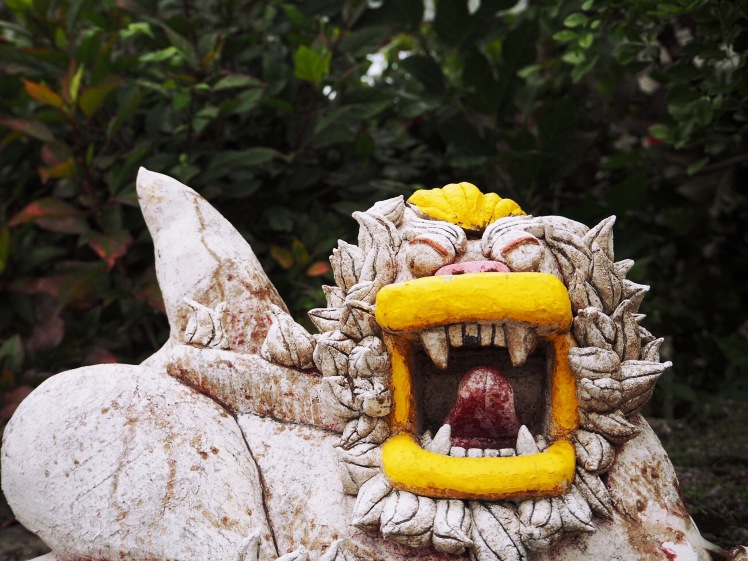
Okinawa
Our flight to Naha, Okinawa’s largest city and capital, left slightly late and was subject to quite a bit of turbulence. Nevertheless, we arrived at a makeshift terminal in Naha (repurposed from a warehouse, probably?) where baggage claim was handled by airline employees lugging our bags from some unseen storeroom to a waiting area. A shuttle bus then had to make several trips to take all of us to the terminal itself.
We took the monorail across town to the Asato station, where our hotel was and crashed for the night. We ended up scoring a highly discounted room at the White Terrace guest house as part of some winter promotion, which ended up being cheaper than two dorm beds elsewhere. As we quickly learned, however, Japan was going to be expensive.
We spent the next day exploring Naha, and found that we were quite fond of what Okinawa had to offer so far. If we thought Jeju was similar to Hawaii, Okinawa is practically an exact replica. The locals are the laid-back, beach bum, surfer type, and the United States even administered the islands for nearly two decades after the war, so American culture isn’t exotic. Not to mention the huge American military bases on the main island that attract a massive amount of Americans to the islands every year. Fortunately, however, the islands’ culture is very much their own, and any American influence is just that: an influence. Japanese culture, albeit a more laissez faire take on the matter, still runs deep. In reality, however, the Ryukyuan culture is a thing of its own, not entirely Japanese or anything else.

Naha itself is a nice town, architecturally something like the Hawaiian islands, and not totally unlike one of the bigger towns on Oahu. The weather is always fairly agreeable, and didn’t drop too much below 20°c the whole time. As such, many of the restaurants maintain outdoor seating, or are little more than a bench and small table next to a makeshift kitchen.
We had some fantastic sushi for lunch at the Makishi public market, the freshness of which was unrivaled by anything we had had recently. After wandering around the center for a bit we headed out to the Zuisen Awamori distillery near the Shuri monorail station. We were treated to a brief tour of the plant and a tasting of various types of their awamori. Awamori is a type of distilled rice wine specific to Okinawa, but its flavor is not unlike a stronger version of soju. It is made from imported Thai rice, as apparently that is somehow better. This is a tradition that started with Southeast Asian trading routes crossing through the Ryukyu islands many hundreds of years ago. We ended up buying a bottle of their 10 year old stock, which hopefully won’t break in our bags before we’re back in Seattle.
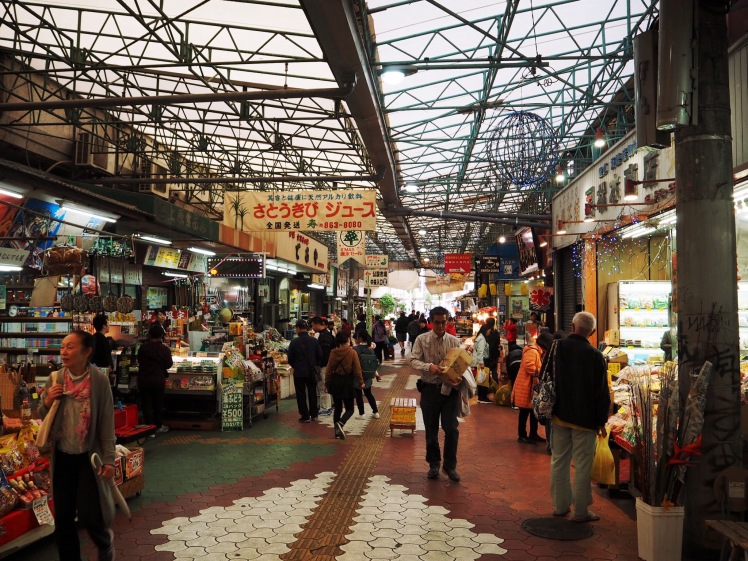
After our distillery visit we checked out the Shurijo castle nearby. A nice place, by any measure, but quite crowded, and perhaps not worth the price tag. We enjoyed wandering around the grounds just outside the castle a bit more, at any rate.

For dinner, we tried to visit the best gyoza place (called Ichiban Gyoza Ya) we could find online near the Asato monorail station, but our efforts failed us and we ended up settling for some other place in the same open air market. The atmosphere was lively for 10:30pm on a Tuesday, with people crowded around aluminum tables and ad hoc bar tops, drinking and eating and laughing into the night. The gyoza we got certainly wasn’t the best, but a cold beer and a plate of food in a random alley in Naha with a bunch of drunk locals was pretty prime for a Tuesday night activity.
The next day we decided to check out more of the island and took a trip to its second largest city, Nago, on the north side. This may have been a huge waste of money, as the bus fare was about $17 per person per direction, for a grand total of nearly $80 (!!!!) for two 60km bus trips. Nago is a fine place and all, but quite unremarkable and definitively not worth $80 to get to.
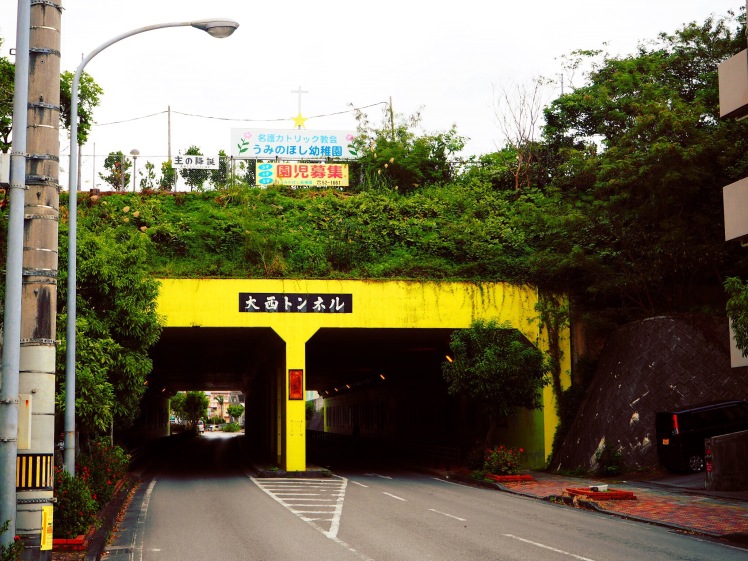
The one redeeming quality of the trip was the Orion brewery tour which we completely stumbled into. Nago was a veritable ghost town, with most of the shops and restaurants closed for the afternoon. We wandered through the empty streets and eventually came upon the Orion brewery, which we learned is the only local brew in Okinawa. We joined a tour with a handful of other Taiwanese and Chinese tourists because it was free, and it ended up being the highlight of our trip to Nago. They took us around the factory and showed us how the beer is made and bottled, and then finished it off with more than half a liter of the freshest Orion possible, all for free! Probably still doesn’t make up for the $80 expense of getting all the way there, but at least there was free beer. All told, public transport in Okinawa is very lacking, and where it does exist it’s extremely expensive.
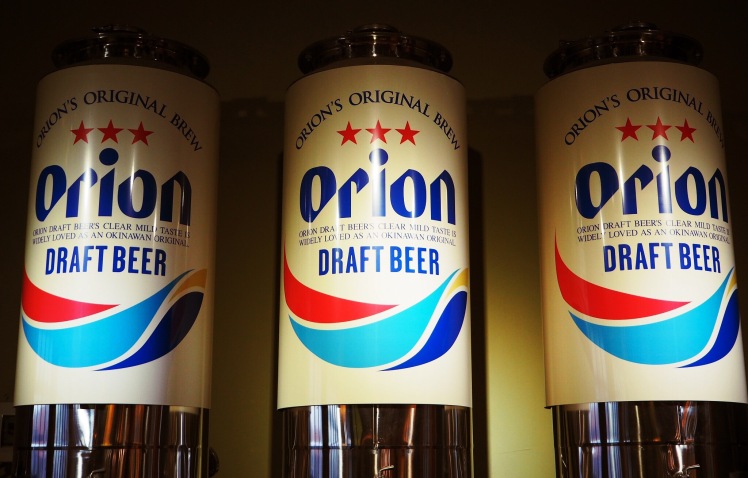

When we got back to Naha we decided to give our search for the best gyoza another shot. We wandered around the market some more, the vibe the same as the night before. We eventually settled on a decent-looking corner restaurant, it was clear that the pairing was not meant to be. Only after noshing on some of the most decadent gyoza did we look up and recognize the sign from our google searching; perhaps it was meant to be after all.
For our final full day in the islands we wanted to visit another of the many hundreds of Ryukyuan islands, so we decided to take the ferry out to Zamami island for a day trip. We opted for the slower ferry to save a bit of money (only $35 per person rather than $50! Woohoo!), and unfortunately it only stays on the island for two hours, so we didn’t have a ton of time to explore. Nevertheless, we made the best use of our time as we could and had lunch at a lovely little cafe in town and went for a swim on the other side of the island. All in all, the island was captivating, and spending most of our visit on a/several island(s) probably would have been a better idea.


All in all, it isn’t unfair to say that we sort of fell in love with Okinawa, and we could both imagine spending a lot more time here. There are many more islands and archipelagos in the prefecture spanning all the way down near Taiwan up to the south coast of Fukuoka, and it would be lovely to explore more of them. It’s likely that we’ll be found on these shores again at some point…
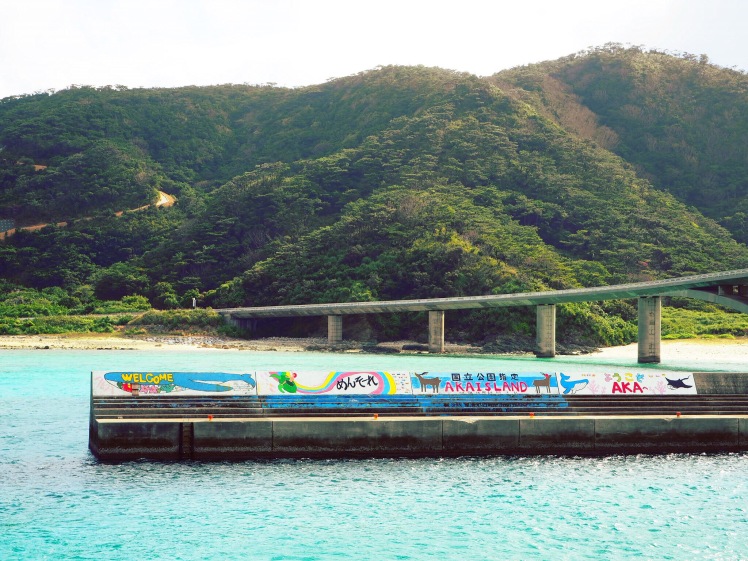
Kyoto
Our trip to Kyoto started with a flight from Okinawa to Osaka, which was a fairly uneventful if not visually-stimulating trip. Many islands in the chain were visible back to the mainland, and we even saw a distant volcano spewing a tower of ash.
We landed in Osaka and booked a cheaper yet much slower alternative to the express train to Kyoto, which consisted of two local train legs with a transfer in Osaka. All in all it took a few hours, but we were able to save some $15 by doing so.
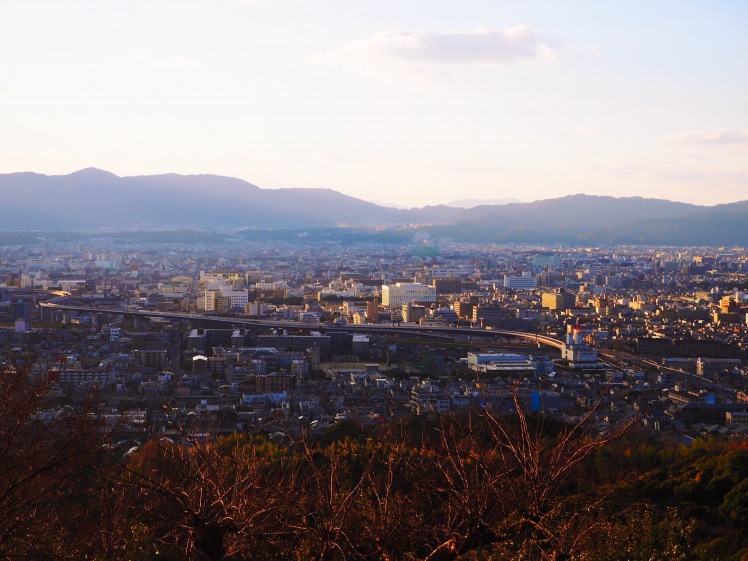
We checked in at the Bird Hostel, and after taking note of how clean it was we learned that we were there on just their second day of opening, and we shared the bar top with their first ever customer. It’s crazy expensive for a hostel, just like everything else in Japan, but it was very nice. They were still working out some kinks with the bar pricing, we suppose, because they charged us a mere 360¥ for a whiskey (poured to the very top of the lowball, which was pretty impressive) the first night, but then ramped it up to 600¥ the second night, citing a mistake in their calculations as the cause. Still a pretty decent price point for a glass full of whiskey though…
We explored some sights around the city with a fellow hostel guest the next day. We checked out the temple and bamboo forest at Arashiyama. Both were quite touristy, but fairly nice, however nicer temples and gardens are a dime a dozen in Kyoto.

After that, we slowly made our way to the shrine at Fushimi Inari on the other side of the city. The grounds cover quite a large area including the top of a hill, and the lower reaches were extremely crowded, but the higher one made it into the network of trails on the hillside, the more solitude was to be found. The peak itself was not particularly impressive, with not much of a view, but the walk through the forest under the endless arches was very rewarding, and many views were gotten on the way up.
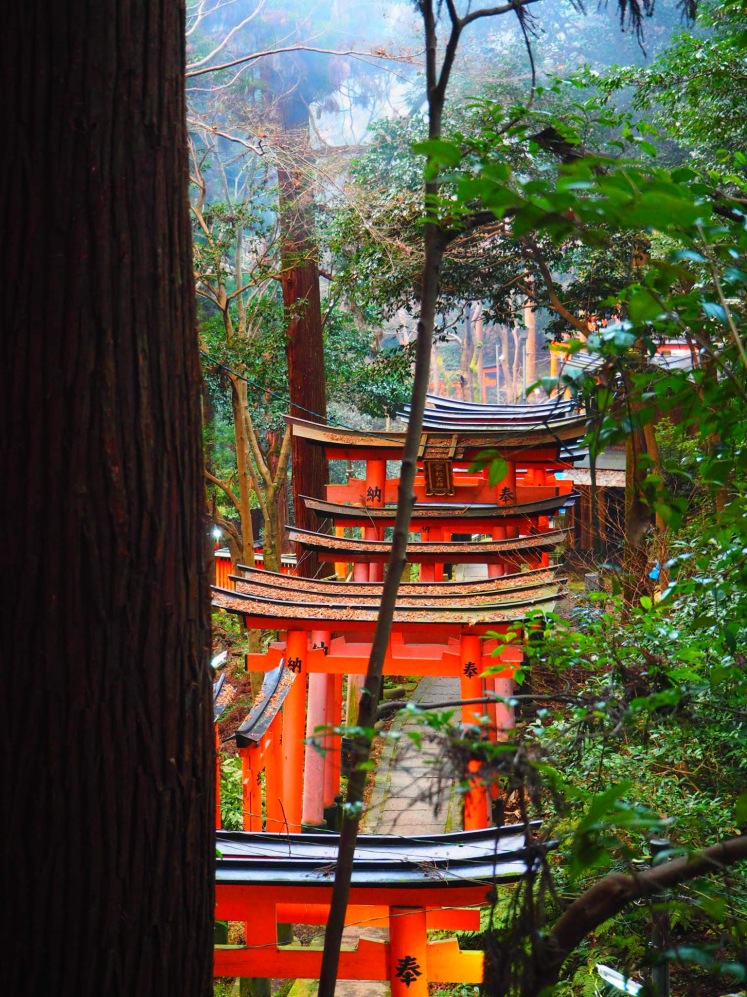
Several of us from the hostel ended up going out for the New Year’s Eve celebration and ended up at Gael’s Irish pub near Kiyamachi. It was a lively scene, and patron and worker alike joined together for the countdown, punctuated by confetti explosions and champagne toasting.
Fairly sluggishly, to be expected on January 1st, we made our way to some more temples the following day. We ended up at Kodai-ji, and wandered our way through the ample gardens there.
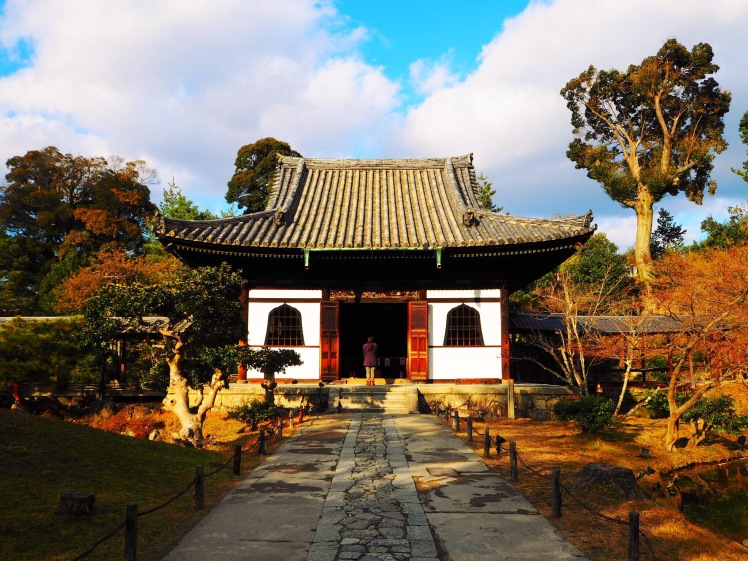
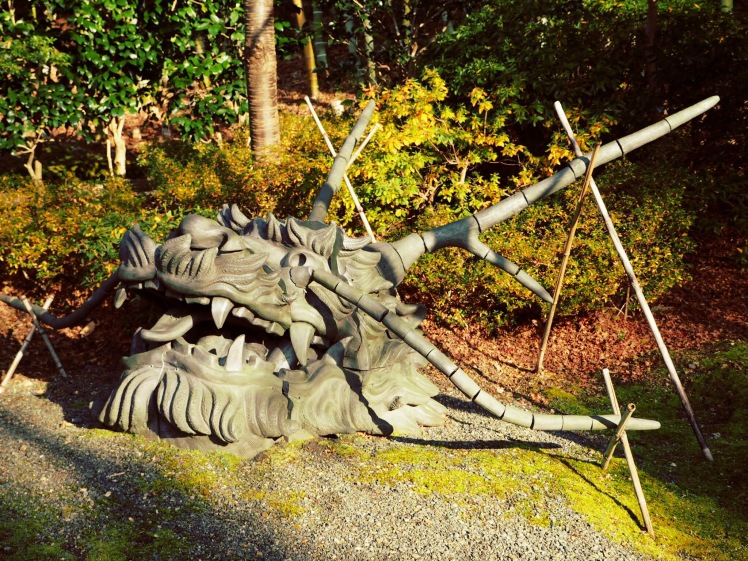
Our lethargy was getting the best of us, however, so we spent some time in Gion, next to Kodai-ji, before heading to the Chaochao Gyoza on Kiyamachi. The gyoza was excellent, but it was clearly a staple of the TripAdvisor crowd with many more western faces than local ones.

Osaka
When we were all templed out we made our way to Osaka. Only some 30 minutes from Kyoto by train, Osaka is the more metropolitan big brother of Kyoto. Lacking the peaceful and historical gardens and shrines that Kyoto has so many of, Osaka replaces them with vibrant, neon-lit streets and throngs of people going this way and that.

We checked into our hostel, which was also ridiculously expensive, but not quite as nice as our digs in Kyoto, and headed out on the town.
We randomly ended up at Dotonburi on the busiest day of the year (when all the sales happen), so it was crowded beyond belief. The entirety of the seemingly never ending Shin Sai Bashi-Suji was utterly flooded with people. To add to the chaos, the typical salespeople (if that’s the appropriate term) outside every business screamed welcoming phrases at the tops of their lungs to nobody in particular; the whole experience was quite overwhelming. Nevertheless, once we got used to the crush we picked up a couple of necessary clothing items (on a very deep discount, which explained why there were so many people, perhaps) for our upcoming foray into the arctic climes of Hokkaido.
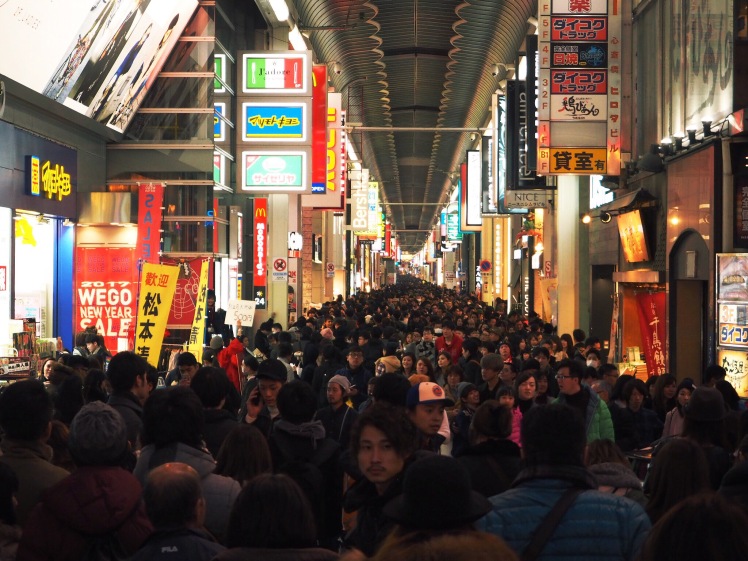
In stark contrast to the day before, Osaka was practically a ghost town the following day. We tried to check out some museums, but everything was closed and the streets were empty. We headed back to Namba, which seemed to be the epicenter of humanity the day before, in hopes of finding something to do. The streets there were considerably more lively, but still a far cry from the day before. We wandered around, marveling at the countless porn shops and arcades (right next to each other, mind you) and their clientele, largely indistinguishable from one another.
We walked by a cinema and decided to see if anything in English was playing. We bought tickets to Rogue One (in 3D, unfortunately, as 2D was sold out) for an hour later. The movie was quite entertaining, and certainly did the trick for an otherwise dull day.
We finished up the day with a happy hour drink at our hostel’s bar and became amicable with the friendly bartender. At his behest, we tried a yakiniku (Japanese barbecue, quite similar to Korean barbecue, not surprisingly) joint called Premium 298 for dinner a bit later. After searching the block for a good 10 minutes we finally found the sign and headed up to the 4th floor. There was already a crowd waiting, and the host told us we were at least 90 minutes out. We put our name on the list and went to get a beer at a nearby bar. We settled in at a cozy bar just down the street, quite content with a cold beer and the sounds of the Modern Jazz Quartet on the speakers.
We headed back to the restaurant and were seated right away in one of the numerous private rooms. The restaurant is all you can eat, but you pick your ingredients. We went for beef and chicken, and were brought a plate (refilled upon request) of raw meat to be cooked on our table’s gas grill. The food was amazing, and we gorged ourselves beyond repair (for what seems like the 100th time since starting our trip). To top it off, the place is only 1,100¥ per person, which is a pittance for Japan, not accurately reflecting the quality and atmosphere of the restaurant. All in all, definitely worth it.
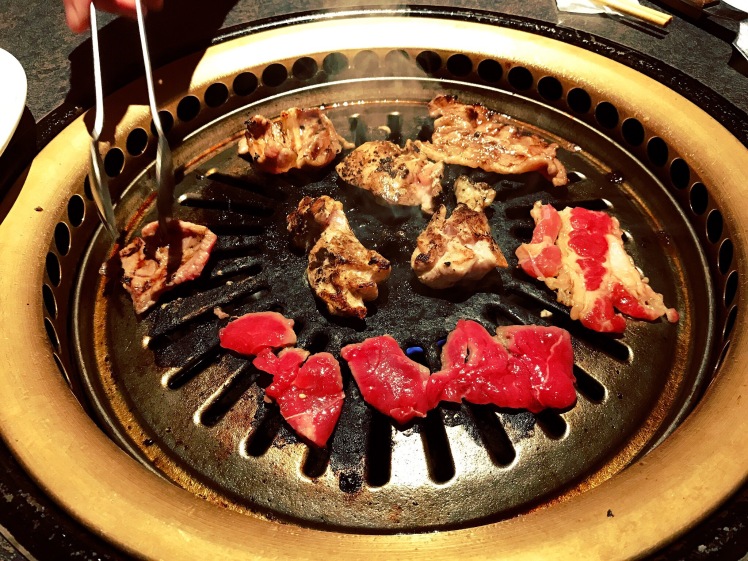
Our flight (see? We’re flying again. Maybe this will be the last time we emphasize that we’re flying) to Hokkaido left the following morning at 7:25, so we tucked in and called it a night around 10:30. We woke up at 4 and gathered our things (mostly packed from the night before) to head to the bus stop.
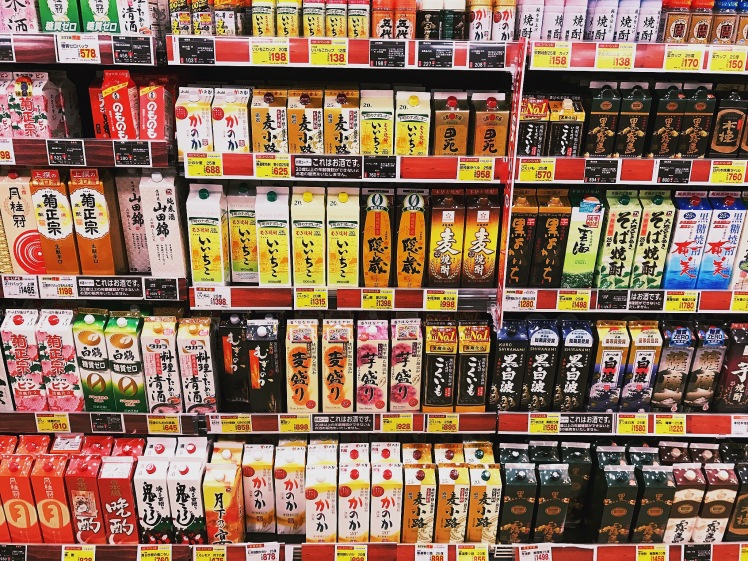

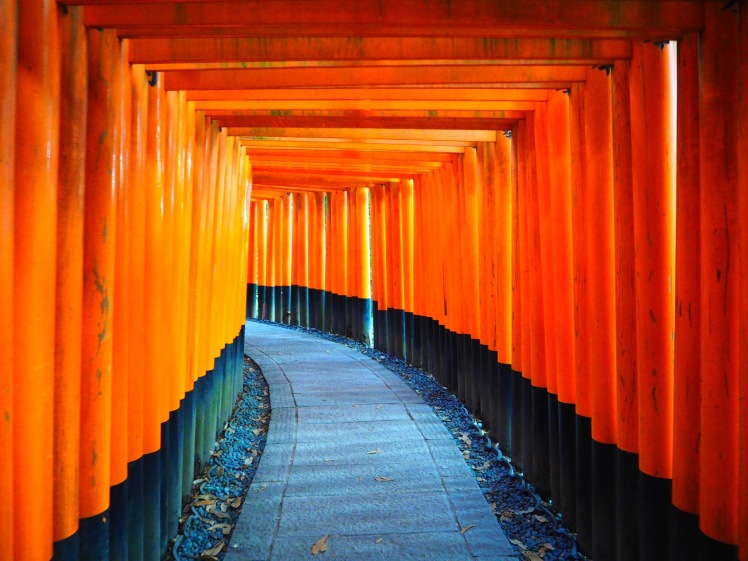
Ya gotta love a liter of fresh free beer from the brewery! But that sign on the Dotonburi street “NY Style Monster Palfeit”? That’s as bizarre as “Edqueer Wayings Weirned or Sht??”. Convenient that you can pick up cartons of sake in the dairy aisle, though.
LikeLike